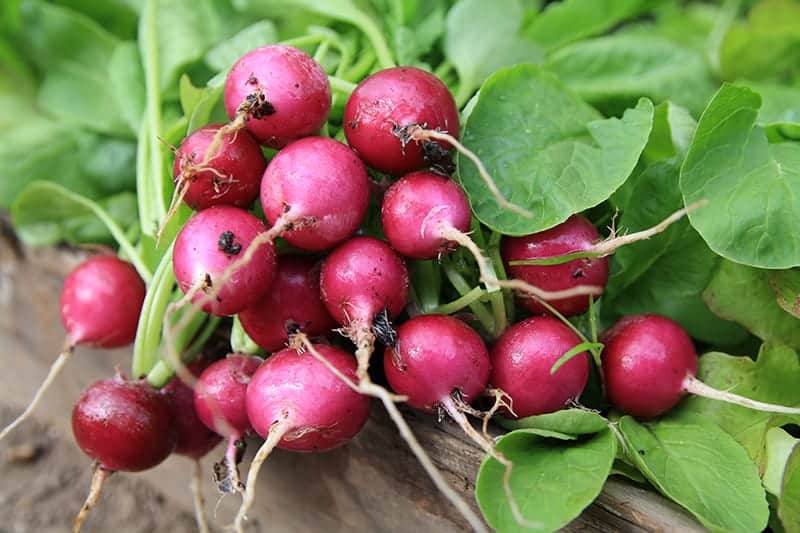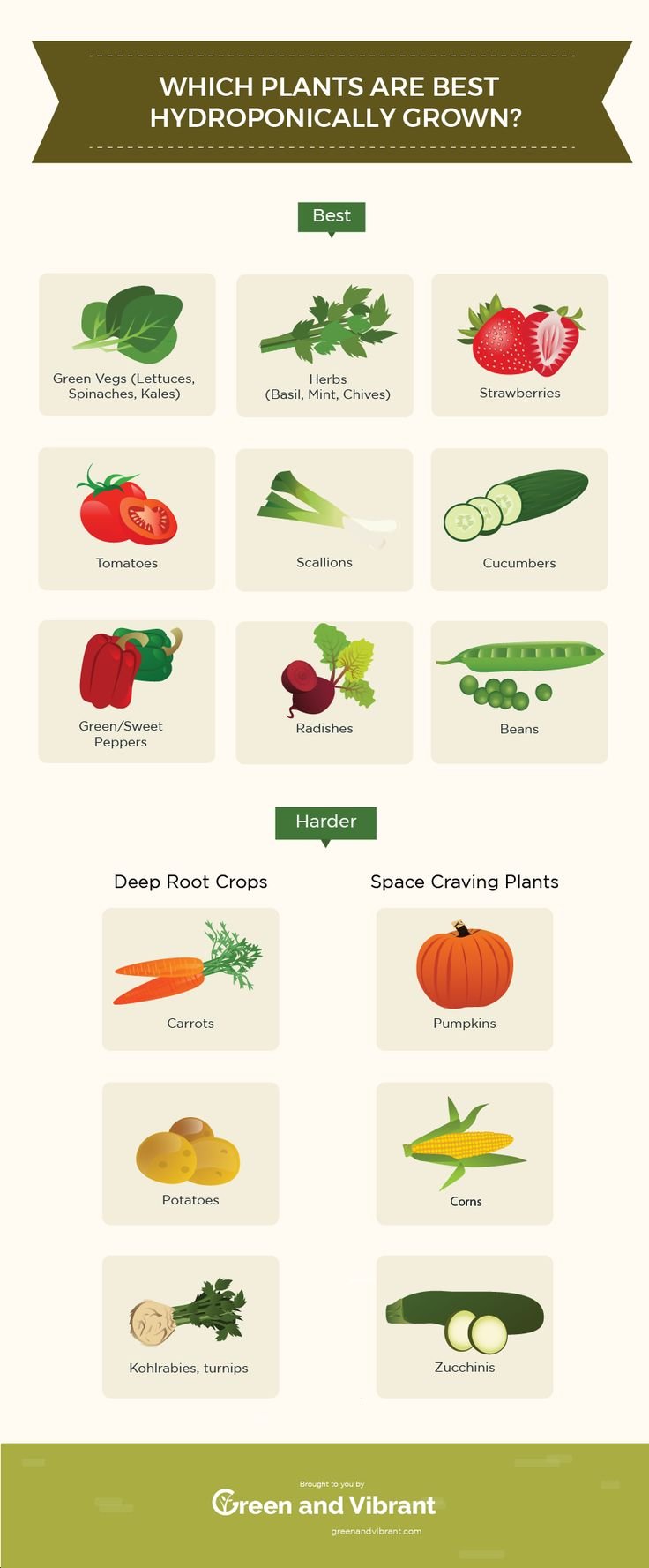Hydroponics is a method of growing plants without soil. It’s perfect for those with limited space.
So, what are the easiest plants to grow hydroponically? Hydroponic gardening is gaining popularity. It offers a clean, efficient way to grow plants. You don’t need a green thumb to succeed. Some plants are particularly well-suited for this method. Beginners will find these plants easy to grow.
They thrive in water-based environments. Plus, they often grow faster than in soil. This blog will explore these easy-to-grow hydroponic plants. You’ll learn about their benefits and basic care tips. So, let’s dive into the world of hydroponics and discover which plants are the easiest to grow.
Introduction To Hydroponic Gardening
Hydroponic gardening is a method of growing plants without soil. Instead, plants grow in a nutrient-rich water solution. This technique offers many benefits and is gaining popularity among gardening enthusiasts. It is especially suitable for people with limited space.
Benefits Of Hydroponics
Hydroponic gardening has several advantages. Firstly, it allows for faster plant growth. Plants receive nutrients directly from the water. This makes it easier for them to absorb what they need. Secondly, hydroponics uses less water compared to traditional gardening. The water in the system is recycled, reducing waste. Thirdly, it minimizes the risk of soil-borne diseases. Plants are healthier and more productive.
Basic Requirements
To start hydroponic gardening, you need a few essential items. A container or reservoir is necessary to hold the nutrient solution. You also need a growing medium. This can be rock wool, clay pellets, or coconut coir. These materials support the plants and retain moisture. A pump and air stone help to oxygenate the water. Lastly, you need proper lighting. LED grow lights or fluorescent lights work well. Make sure the plants receive enough light each day.

Credit: matsuoutdoorsmanshow.com
Leafy Greens
Growing leafy greens hydroponically is an excellent choice for beginners. These plants thrive in water-based systems and provide fresh, nutritious leaves. Leafy greens grow quickly and require minimal effort. Let’s explore some of the easiest leafy greens to grow hydroponically.
Lettuce Varieties
Lettuce is a popular choice for hydroponic systems. It is easy to grow and matures quickly. There are several lettuce varieties suitable for hydroponics:
- Romaine Lettuce
- Butterhead Lettuce
- Iceberg Lettuce
- Leaf Lettuce
Each variety has its own unique flavor and texture. Romaine lettuce has crisp leaves, while butterhead is known for its soft, buttery texture. Iceberg lettuce is crunchy and refreshing, and leaf lettuce offers loose, tender leaves. These varieties thrive in nutrient-rich water and under proper lighting conditions. Harvesting can start as early as three weeks.
Spinach And Kale
Spinach and kale are nutrient-dense leafy greens. They are perfect for hydroponic cultivation. Spinach grows rapidly and produces an abundance of tender leaves. Kale is hardy and can withstand various conditions. Both plants require ample light and nutrients.
Spinach varieties suitable for hydroponics include:
- Bloomsdale Long Standing
- Baby’s Leaf Hybrid
- Space Spinach
Kale varieties for hydroponic growth are:
- Lacinato Kale
- Red Russian Kale
- Curly Kale
These greens are rich in vitamins and minerals, making them a healthy addition to your diet. Harvesting can begin within a few weeks, offering a continuous supply of fresh greens.
Herbs
Growing herbs hydroponically is a great way to enjoy fresh flavors all year round. These plants are easy to grow and require minimal space. Whether you’re a beginner or a seasoned gardener, herbs can thrive in a hydroponic system.
Basil
Basil is one of the most popular herbs to grow hydroponically. It grows quickly and thrives in nutrient-rich water. Ensure it gets plenty of light. Basil loves sunlight and warmth. Harvest leaves often to promote new growth.
Mint
Mint is another easy herb to grow hydroponically. It spreads quickly and requires regular pruning. Mint enjoys a cool environment and moderate light. It’s perfect for adding flavor to drinks and dishes. Keep it in a separate container to prevent it from overrunning other plants.
Parsley
Parsley grows well in a hydroponic system. It needs plenty of light and a balanced nutrient solution. Parsley has deep roots, so a larger container is better. Regular harvesting will keep the plant healthy and productive. Use it fresh to add a burst of flavor to meals.

Credit: www.nosoilsolutions.com
Fruit-bearing Plants
Fruit-bearing plants can flourish in hydroponic systems. They offer fresh produce and add a vibrant touch to your indoor garden. With the right care, you can enjoy homegrown fruits all year round. Let’s explore some of the easiest fruit-bearing plants to grow hydroponically.
Strawberries
Strawberries thrive in hydroponic systems. They need minimal space and can produce a good yield. Ensure they get enough light and nutrients. Regularly check the pH levels to keep them healthy. You can enjoy fresh, sweet strawberries without much effort.
Tomatoes
Tomatoes are another excellent choice for hydroponic growing. They grow quickly and need moderate care. Provide proper support for the plants as they grow taller. Make sure they receive enough light for fruit production. With a little attention, you can harvest juicy tomatoes right at home.
Vining Plants
Vining plants are perfect for hydroponic systems. They thrive and produce high yields. These plants need support structures to grow vertically. This makes them space-efficient. Below are some of the easiest vining plants to grow hydroponically.
Cucumbers
Cucumbers grow well in hydroponic systems. They grow fast and produce a high yield. These plants need plenty of light. A minimum of 12 hours of light daily is ideal. Cucumbers also need support to grow vertically. Use a trellis or netting to guide their growth. Ensure the nutrient solution is rich in potassium.
Peppers
Peppers are another excellent choice for hydroponic gardening. They include both bell peppers and chili peppers. These plants prefer warm temperatures. A range of 70-80°F is perfect. They also need good air circulation. Peppers require a balanced nutrient solution. Support structures help them grow upright and healthy. Ensure they get enough light, around 14-16 hours daily.

Credit: ourlittlesuburbanfarmhouse.com
Root Vegetables
Root vegetables are ideal for hydroponic systems. They require less space and grow quickly. These vegetables thrive in nutrient-rich water, making them perfect for beginners.
Radishes
Radishes are one of the easiest root vegetables to grow hydroponically. They mature fast, often in just 30 days. This quick growth makes them perfect for those new to hydroponics. Radishes prefer cool temperatures and plenty of light. Ensure they get at least 6 hours of light daily.
Use a simple hydroponic system like a Kratky or deep water culture. These methods provide the necessary nutrients and water. Radishes need a steady supply of oxygen to their roots. Maintain good aeration to prevent root rot. Harvest them when they are about 1 inch in diameter.
Carrots
Carrots can be grown hydroponically with a bit more attention. They take longer to mature compared to radishes. Expect a growth period of 70 to 80 days. Carrots need deeper containers to accommodate their long roots. A bucket or deep tray works well.
Ensure the growing medium is loose and well-draining. Coconut coir or perlite are good choices. Maintain a consistent pH level between 6.0 and 6.5. Carrots need about 8 hours of light each day. Use an LED grow light if natural light is insufficient. Harvest them when they reach the desired size.
Microgreens
Microgreens are tiny, flavorful greens harvested at a young stage. They pack a punch of nutrition and are easy to grow hydroponically. These small plants are perfect for beginners and experienced gardeners alike.
Popular Varieties
Several microgreens are popular for hydroponic growth. Radish, arugula, and broccoli are common choices. Each variety offers unique flavors and colors. Radish microgreens are spicy, while arugula has a peppery taste. Broccoli microgreens are mild and slightly sweet.
Growing Tips
Growing microgreens hydroponically is simple. First, choose a shallow tray. Fill it with a growing medium like coconut coir. Sprinkle seeds evenly on the surface. Keep the tray in a warm, sunny spot. Water the seeds regularly, keeping the medium moist. Within a week, you will see sprouts. Harvest microgreens once they are about 2-3 inches tall.
For best results, use a nutrient solution. This will ensure the microgreens get the nutrients they need. Also, ensure good airflow around the plants. This helps prevent mold and keeps plants healthy.
Maintenance Tips
Growing plants hydroponically can be a rewarding experience. With the right care, your plants will thrive. Here are some essential maintenance tips to keep your hydroponic garden healthy. Following these guidelines will ensure that your plants grow strong and produce a good yield.
Nutrient Management
Managing nutrients is crucial in hydroponics. Plants need a balanced nutrient solution to grow well. Here are some tips:
- Use a quality hydroponic nutrient solution.
- Check and adjust the pH level regularly. Ideal pH is 5.5-6.5.
- Monitor the Electrical Conductivity (EC) to ensure proper nutrient concentration.
Keep a close eye on your plants. Signs of nutrient deficiency include yellowing leaves or stunted growth. Adjust the nutrient mix if you notice any issues.
Pest Control
Pests can affect hydroponic plants. Keeping them at bay is essential. Here are some effective pest control tips:
- Inspect plants regularly for any signs of pests.
- Use natural predators, like ladybugs, to control pests.
- Maintain proper air circulation to reduce the risk of pests.
If you find pests, remove them manually or use organic pest control methods. Avoid harsh chemicals that can harm your plants.
Frequently Asked Questions
What Are The Easiest Herbs To Grow Hydroponically?
Basil, mint, and cilantro are some of the easiest herbs to grow hydroponically. They thrive in nutrient-rich water and require minimal maintenance. These herbs grow quickly and can be harvested continuously.
Can I Grow Lettuce Hydroponically?
Yes, lettuce is one of the easiest plants to grow hydroponically. It grows quickly and requires minimal space. Hydroponic systems provide the perfect environment for lettuce, ensuring a steady supply of fresh greens.
How Do I Start Hydroponic Gardening?
Starting hydroponic gardening is simple. Choose a system, like NFT or DWC, and select your plants. Ensure proper lighting, nutrient solution, and pH levels. Regularly monitor and maintain your system for best results.
What Vegetables Grow Well Hydroponically?
Tomatoes, cucumbers, and peppers grow well hydroponically. They thrive in controlled environments with nutrient-rich water. These vegetables produce higher yields and better quality in hydroponic systems.
Conclusion
Hydroponic gardening offers many easy-to-grow plants. Beginners can start with lettuce, spinach, or herbs. These plants thrive quickly and need little care. Tomatoes and peppers are also good choices for more variety. Hydroponics saves space and water, making it eco-friendly.
Anyone can enjoy fresh produce year-round with minimal effort. Starting with these easy plants will lead to a successful hydroponic garden. Happy growing!





